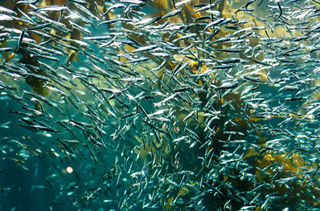Artificial Intelligence
Using AI to Unravel the Complexity of Collective Behavior
A new machine learning model for collective behavior of living organisms.
Posted April 19, 2019

Collective behavior is the spontaneous, temporary, and unstructured behavior of a group in response to the same situation. In the animal kingdom, collective behavior can be observed in flocking birds, swarming bats, schooling fish, and stampeding cattle herds. Insects that live in colonies, such as ants, wasps, termites and bees exhibit collective behavior. Human collective behavior ranges from fads, crazes, and social movements to riots, mass hysteria, panics and mobs. How does collective behavior arise? How does a large group of individuals form a unified ensemble?
To answer this question requires modeling collective behavior. There are various ways to approach the modeling. In physics, collective behavior is typically modeled with the assumption that individuals are influenced by a physical force, rather than as agents. However, this type of model is not an ideal fit for biological systems with interacting living organisms.
To address this issue, a team of researchers created a new approach to studying collective behavior by using artificial intelligence with learning agents that have the ability to perceive and interact with environmental sensory input, and whose interactions are not pre-programmed. In February 2019, professors Thomas Müller and Hans Briegel from the University of Konstanz and physicist Katja Ried at the University of Innsbruck published their machine learning model for collective behavior called “Projective Simulation” in PLOS One.
The research team illustrated their learning agent model with locusts—short-horned grasshoppers that form swarms and are an agricultural threat. The swarming behavior of locusts is well-researched, providing the team with benchmarks to test their model.
To achieve the agent’s learning, the team enabled memory capacity of past interactions with the environment, and provided a reward. The team also equipped the agents with a “forgetting mechanism” to enable manage in environments that are non-deterministic or changing.
The researchers characterize their agents as being “capable of learning how to behave, simply by being exposed to an environment that rewards certain outcomes, rather than requiring their interactions to be postulated ad hoc.”
According to the researchers, the Projective Simulation model “offers the possibility of exploring how the collective dynamics are affected as the underlying individual responses change—not only by manually changing the relevant parameters, which is possible in general individual-based models, but also as part of the adaptive (learning) process.”
The results show that learning-agent-based models are well suited for studying collective behavior as they offer a more realistic and detailed view on how individuals in a swarm respond to perceptual input and the activity of their neighbors. Having demonstrated this principle, as next steps, the researchers plan to test their model on more demanding learning tasks and rewards on “realistic survival tasks, based on insights from biology and ecology, in order to explore the phenomenon of collective motion in more complex settings.”
Copyright © 2019 Cami Rosso All rights reserved.
References
Ried, Katja, Müller, Thomas, Briegel, Hans J.” Modelling collective motion based on the principle of agency: General framework and the case of marching locusts.” PLOS One. February 20, 2019.


